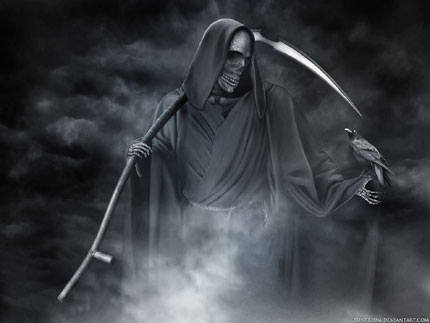Special issue of the Journal of the Fantastic in the Arts with guest editors Sarah Juliet Lauro and Kyle William Bishop
contact email: afterlivesjfa@gmail.com
The recent flurry of critical attention paid to the zombie and other forms of living dead, such as the vampire (back again to haunt the cultural imagination of a new generation) or the ghost (gliding along a spectrum from spiritual to secularized in the era of the cybergothic), illustrates how our monsters personify the question “What comes next for me?” Additionally, post-apocalyptic fantasies and necroscapes dramatizing the end of human civilization pose the query continually recurring in our collective nightmares: “What is next for humanity?” Recent trends in humanities scholarship move beyond the human to a broader perspective of what constitutes being by looking to the animal, the machine, or the environment, while interest in posthuman figures like the cyborg and the android has not waned.
The special issue will investigate ways of imagining what comes after human life ends—for example, liminal beings that defy this boundary line; narratives about worldwide crisis (doomsday prophesies and environmental catastrophes alike); or simply a deceased person’s Facebook page left “live” as a perpetual, virtual shrine. Such imaginings are, variously, philosophical thought experiments, records of our contemporary moment, warnings about the limitations of our current understanding of “humanity” and “being,” as well as admonitions forecasting an end to the anthropocene era if our values do not change. In our contemporary moment, fantasies about the end of life offer new possibilities for imagining “what comes next” for the human, humanism, and even the humanities.
Call for Papers: “After/Lives: What’s Next for Humanity?”
Journal for the Fantastic in the Arts, the journal of the International Association for the Fantastic in the Arts, invites contributions for a special issue on “After/Lives: What’s Next for Humanity?” Looking at various portrayals of what comes “after” death, the works investigated in this issue will raise the broader question of how such representations reflect our contemporary moment and suggest what will come next for humanity. We welcome essays from all disciplines of the humanities that investigate late 20th and 21st century works of film, literature, the visual and performing arts, and new media. Articles between 5,000-9,000 words might address, but are by no means limited to, the following:
• Representations of monsters/figures of living death, such as zombies, vampires, revenants, ghosts, cyborgs, etc.
• Metaphoric representations of death
• Representations of death in video games and new media, or discussions of death and technology
• Post-apocalyptic spaces, disaster zones, or dystopias that represent a changed relationship between the living and the dead
• Representations of cannibalism in the zombie/vampire and the ethics of meat eating
• Narratives about the afterlife, including virtual afterlives in cyberspace
• Lifestyle and performance of death: Goths, raves, LARPing, and zombie walks (i.e., “playing” dead or undead)
In accordance with the journal’s policy, all contributions will be peer reviewed by the Journal of the Fantastic in the Arts (JFA) and subject to their acceptance. JFA uses the MLA style as defined in the latest edition of Handbook for Writers of Research Papers (New York: The Modern Language Association). For more details, please see and the “Submission Guidelines” section: http://wiz.cath.vt.edu/iafa/jfa/submission.html.
Please submit a 500-word abstract as a Word file via email to afterlivesjfa@gmail.com by 1 September 2012, including a description of what stage of development the piece is in: i.e., already in progress, in development, in draft form, etc. Please declare at this time whether you can commit to an end of 2012 (December 31) deadline for a full-length manuscript.






There are no responses yet